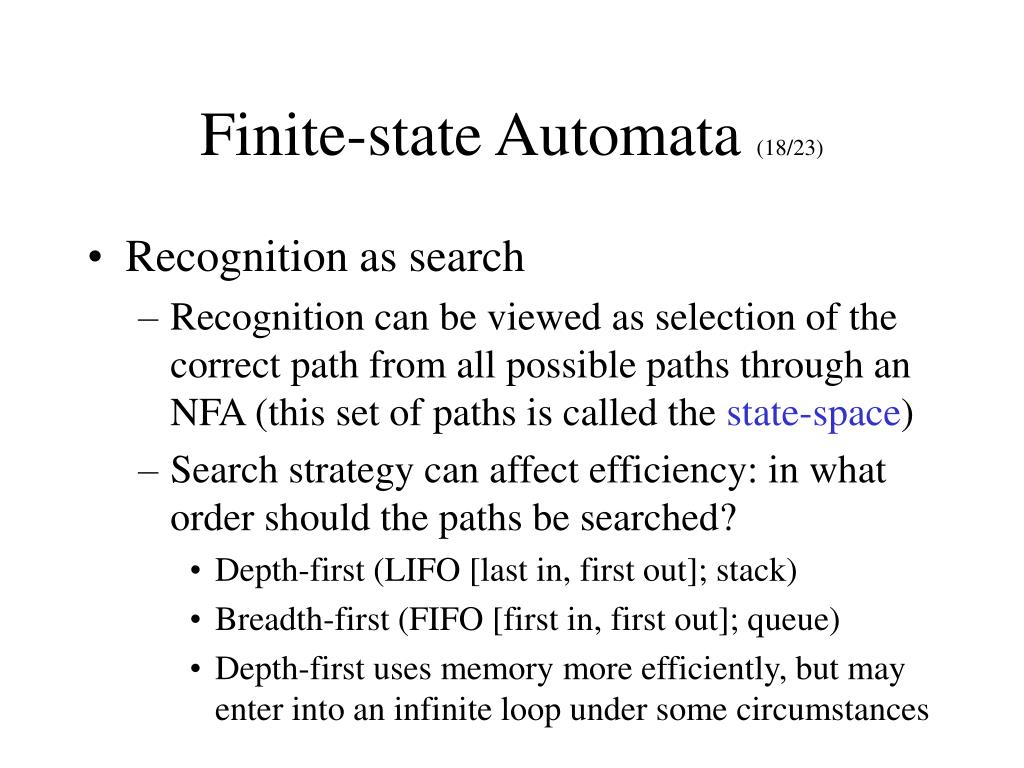

The class of languages accepted by Myhill graphs is the class of local languages. The language accepted by a Myhill graph is the set of directed paths from a start vertex to a finish vertex: the graph thus acts as an automaton. Ī Myhill graph over an alphabet A is a directed graph with vertex set A and subsets of vertices labelled "start" and "finish". Local automata accept the class of local languages, those for which membership of a word in the language is determined by a "sliding window" of length two on the word.

an initial or start state q 0 ∈ Q, and so the two descriptions are equivalent.Ī local automaton is a, not necessarily complete, DFA for which all edges with the same label lead to a single vertex.a finite set of input symbols called the alphabet Σ.9 DFA identification from labeled wordsĪ deterministic finite automaton M is a 5- tuple, ( Q, Σ, δ, q 0, F), consisting of.DFAs, and NFAs as well, recognize exactly the set of regular languages. Using the powerset construction method, every NFA can be translated to a DFA that recognizes the same language. ĭFAs have been generalized to nondeterministic finite automata (NFA) which may have several arrows of the same label starting from a state.
#How to find finite state automata software
For example, a DFA can model software that decides whether or not online user input such as email addresses are syntactically valid. A DFA has a start state (denoted graphically by an arrow coming in from nowhere) where computations begin, and a set of accept states (denoted graphically by a double circle) which help define when a computation is successful.Ī DFA is defined as an abstract mathematical concept, but is often implemented in hardware and software for solving various specific problems such as lexical analysis and pattern matching. For example, if the automaton is currently in state S 0 and the current input symbol is 1, then it deterministically jumps to state S 1. Upon reading a symbol, a DFA jumps deterministically from one state to another by following the transition arrow. For each state, there is a transition arrow leading out to a next state for both 0 and 1. The automaton takes a finite sequence of 0s and 1s as input.

In this example automaton, there are three states: S 0, S 1, and S 2 (denoted graphically by circles). The figure illustrates a deterministic finite automaton using a state diagram. In search of the simplest models to capture finite-state machines, Warren McCulloch and Walter Pitts were among the first researchers to introduce a concept similar to finite automata in 1943. Deterministic refers to the uniqueness of the computation run. In the theory of computation, a branch of theoretical computer science, a deterministic finite automaton ( DFA)-also known as deterministic finite acceptor ( DFA), deterministic finite-state machine ( DFSM), or deterministic finite-state automaton ( DFSA)-is a finite-state machine that accepts or rejects a given string of symbols, by running through a state sequence uniquely determined by the string. For example, the string "1001" leads to the state sequence S 0, S 1, S 2, S 1, S 0, and is hence accepted. The state S 0 is both the start state and an accept state. An example of a deterministic finite automaton that accepts only binary numbers that are multiples of 3.


 0 kommentar(er)
0 kommentar(er)
